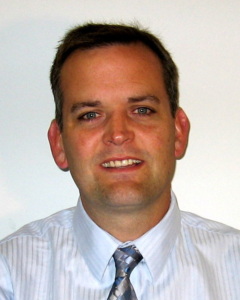This new portal system, customized to follow SPS’s approach to clinical practice (e.g., it is aligned to the criteria that SPS uses for cooperating teachers and engages necessary stakeholders such as school principals in accordance with SPS’s policy), uses the following steps at two points during the year, when the bulk of placements are determined.
- Prep programs create student teacher profiles: Partner prep programs create a profile for each student teacher they wish to place. They can include basic information like their institution, certification area, dates for student teaching or other activities (e.g., practica). Programs can also attach any other relevant information, such as resumes, descriptions of coursework, cover letters, or program descriptions. Programs can request specific placements, but all placements require sign-off from the school district.
- Cooperating teachers sign up: Concurrently, the district sends a recruitment email to all eligible cooperating teachers. The district bases eligibility on years of experience and evaluation ratings, but these criteria could be modified. Eligible teachers indicate whether they’d like to host a student teacher or not (and can provide additional considerations, such as whether they prefer working with a particular prep program).
- Principals approve cooperating teachers: At the same time that eligible cooperating teachers can sign up, principals receive a list of eligible teachers in their building, and they can approve or deny each teacher for hosting a student teacher this year (without providing additional explanations). The district encourages principals to only approve teachers whom they think would be effective mentors. Principal decisions about cooperating teachers may consider factors such as:
- Limiting the total number of student teachers for the school as a whole
- Limiting the total number of student teachers for a grade level or content area
- How often a teacher has a student teacher assigned to their classroom (regarding potential impacts on student learning)
- Whether a teacher has just been assigned to a new grade level or content area and needs time to learn a new curriculum
- Whether a teacher is new to the school and needs time to settle in and time for the principal to see the teacher’s effectiveness firsthand
- District HR director makes initial matches: The HR Director reviews all the requests and available cooperating teachers to make initial matches. The only teachers included in the list are those who have agreed to serve as a cooperating teacher and who have been approved by their principal. He prioritizes requests for specific cooperating teachers, as well as the subjects for which it is hardest to find cooperating teachers (for SPS, this tends to be secondary English and social studies).
- If there are not enough available cooperating teachers, Mr. Gannon can tap into other available data and networks. For example, he can use the district’s evaluation data to identify highly effective teachers who did not opt to be a cooperating teacher and ask that teacher’s principal to personally reach out to see if the teacher will reconsider.
- Cooperating teachers make an initial approval: The system automatically emails cooperating teachers about a potential match and allows the cooperating teacher to review the student teacher’s profile. The cooperating teacher can decide whether to approve the match. Principals are also informed of matches so that they can review information and decide if they want to be more deeply involved in the matching process (e.g., sitting in on the initial meeting).
- Initially approved matches meet: If a cooperating teacher makes an initial approval, the system sends an email to the student teacher instructing them to schedule a meeting with the cooperating teacher.
- Cooperating teachers make their tentative final approval: After the meeting, the cooperating teacher can decide whether to offer a final approval on the match. Mr. Gannon is notified when matches fall through and can either find a new match or explore why the match fell through (e.g., by contacting the prep program or meeting with the principal).
- Prep programs make their tentative final approval: Once a cooperating teacher has issued a “final approval,” the prep program must also meet with the candidate to confirm the match from their perspective.
- Student teacher completes paperwork: When both the cooperating teacher and prep program have approved the match, student teachers receive an automated email instructing them to read the district’s handbook, take a survey about themselves, and attest to reading the handbook.
- Human resources makes final approval: The district’s HR team checks the district’s database to see if the student teacher has any prior experience in the district (e.g., substitute teaching or volunteering) and if there is any associated negative information about them. It also confirms that the candidate has been fingerprinted and gone through the full background check and clearance process.
- Human resources notifies all parties that the student teacher is cleared and can begin placement.
While the process sounds complicated, the entire set of steps can happen in a few days, depending on how quickly student teachers meet with their cooperating teachers and complete all of the steps.
System features
- Automated emails: Many steps along the way trigger an automated email to move participants to the next stage, reducing the need for staff time.
- Integrates data from numerous systems: The HR staff filters out any teacher who was rated below proficient and uploads the list of remaining teachers into the portal as the list of eligible cooperating teachers. The system pulls in data from databases of background checks and people who have been involved with the district, reducing the need for staff time to manually match information.
- Incorporates both practicum and full-time student teaching: The process above describes the placement process for full-time student teaching. However, there is also a practicum-only section of the system for earlier, less intensive field experiences. This process is simpler and also reduces time for both prep programs and school leaders to set up these experiences.
- Easy to prioritize hiring needs: Student teachers’ profiles include their certification area, so it would be easy to use the system to prioritize placements based on areas the district anticipates hiring in the coming year. Spokane does not do this because they are likely facing far lower rates of hiring in the coming years as pandemic recovery funds run out.
Researchers who helped develop this system note that it could be further expanded to include outcome data such as observation feedback and hiring information, and to provide more resources such as cooperating teacher training and guidance on evidence-based practices for student teachers.
Challenges and changes along the way
- Reducing required principal involvement: Prior to the portal system, principals would receive numerous rounds of emails to set up student teacher matches. Even in the first iteration of the portal, principals signed off on both whether cooperating teachers should mentor and whether to approve initial matches. Based on input from principals, the system no longer requires principals to approve the student teacher–cooperating teacher matches, but it provides principals with information in case they wish to weigh in on the match.
- Initial skepticism from prep programs has given way to enthusiasm: Prep programs were initially skeptical of this process but now are encouraging other districts to replicate it given that it saves them time as well.
- The greatest cost was the initial development: The initial work was paid for by discretionary funding from the Center for Education Data & Research (at the University of Washington) conducted by a research team (primarily Dan Goldhaber and Cyrus Grout) at the University of Washington. Once the portal was built, the ongoing costs are limited; the district is contracting with one of the developers to devote about two hours a week to help with any ongoing changes. The system has also drastically reduced needed staff time on the placement process, for both HR staff and building principals.
Outcomes
With this new portal, the entire process only takes 20 to 30 hours per cycle (with two cycles a year) plus a few hours a week to monitor progress through the school year, as compared to hundreds of hours in the previous system.

Paul Gannon, HR director of employee retention and evaluation, shared that the Student Teacher Portal streamlined a formerly cumbersome process and allowed the district to create additional checks for quality along the way.
Advice
- Be clear about your own processes: Establishing who needs to be communicated with at each point, who will manage each step, and what checkpoints happen along the way allows for a more efficient development of the portal.
- Integrate data systems where possible: Automatically pulling in data on teachers’ evaluation ratings and background checks can help streamline the placement process.
- Communicate with prep programs: Opening a dialogue with prep programs about how their needs can be best met through the portal. In Spokane, having regular conversations with prep programs was vital to the success of the portal. It helped the team to make improvements and refine processes. The open communication also helped prep programs be more open-minded and supportive of the change.
